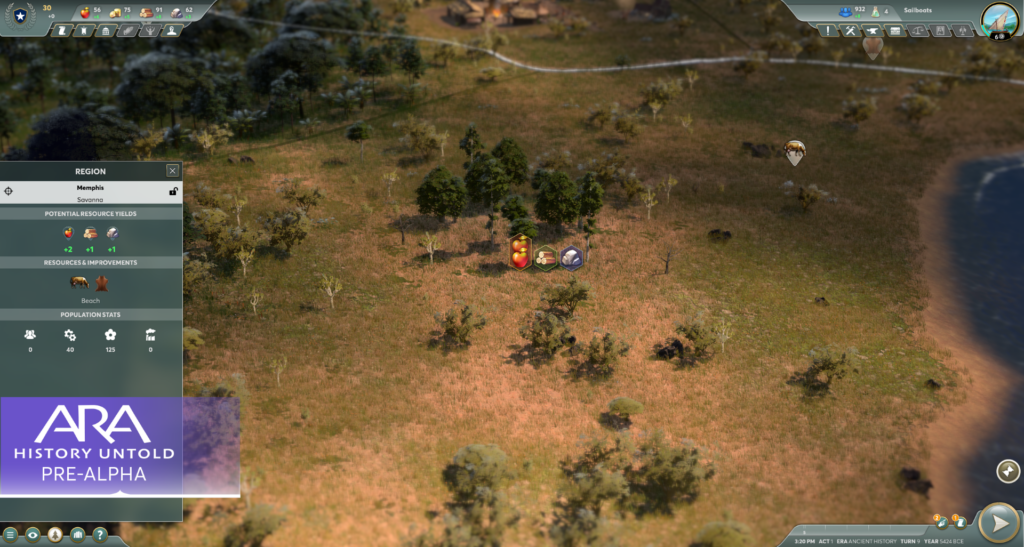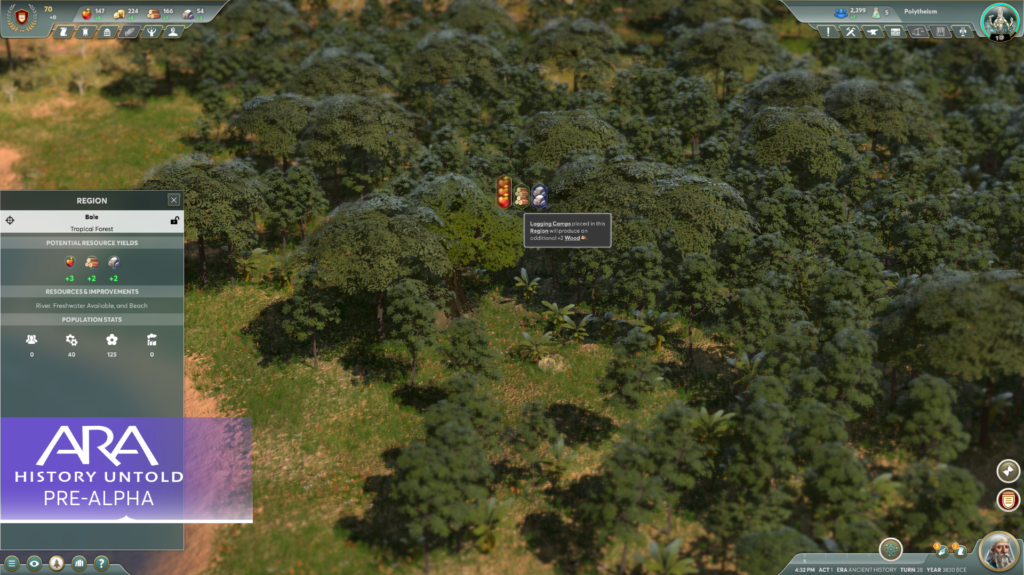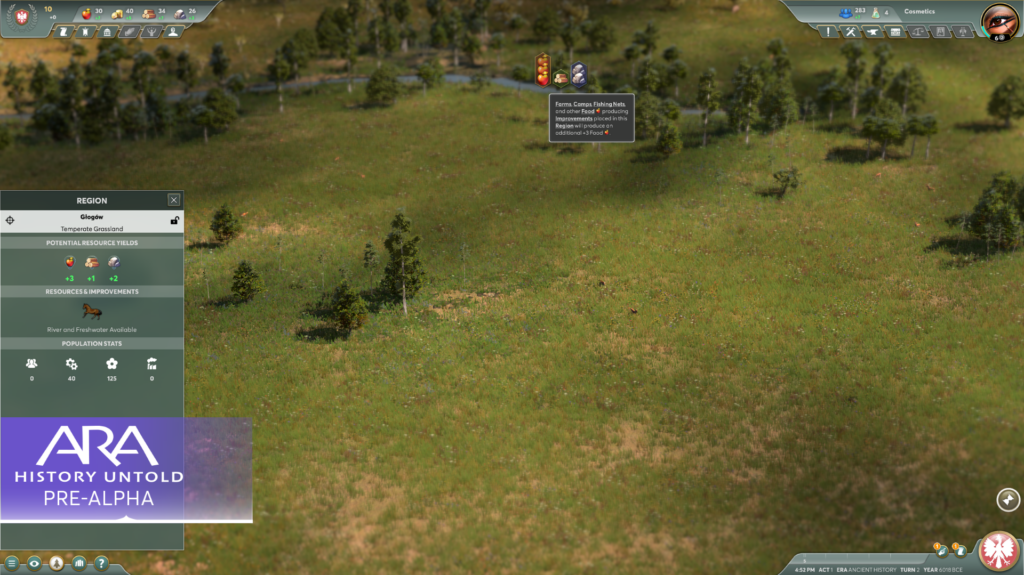The living world in Ara: History Untold is meant to reflect the real world’s natural biodiversity. This is why the game features twelve biomes, Dangerous Wildlife, and a myriad of Natural Resources – all of which present unique challenges and opportunities to the player’s budding nation.
Each biome has a baseline amount of resources such as food, wood, and stone, however, specific biomes can provide more or less additional resources when an appropriate improvement is built.
Biomes also affect which Dangerous Wildlife may appear – while a Temperate Forest may contain cougars, a Savannah may instead be teeming with lions, which are harder to clear. Other natural resources use a similar system – Cows are more likely to inhabit the Temperate Grassland while Camels are more likely to reside in the Arid Desert.
The distinct makeup of each biome ensures that a player can employ unique strategies in each playthrough, and create nations shaped by the world around them.



Dangerous Wildlife is comprised of various biome-specific animals that were a danger to humans in early agrarian societies. As a game concept, it’s there to help reinforce to the player the areas of the world that are wilder and will require additional resources to settle and provide some additional interesting early game activity and rewards for exploration.

Prior to our Technical Alphas, Dangerous Wildlife was being treated as a set of solo military units, roaming around the map, to be defeated by a player’s early units (e.g., Scouts). They were grouped under a “Wilderness” faction so they would play nice with the other military systems – but what this did in practice was emphasize a focus on early game warfare and create a distracting / frustrating set of obstacles for players to explore and progress.
We received a lot of valuable feedback on how this made players feel – and we made some adjustments.

Today, Dangerous Wildlife is treated instead as a modifier for Sub-regions. Sub-regions that contain Dangerous Wildlife must be “cleared out” before their resources are available for players to harvest and exploit, and doing so gives players a small relevant reward (e.g., Furs for clearing an area of Wolves).

Players have a chance to discover over fifty different kinds of Natural Resources, from rubber trees to silkworms, to precious metals or the staple fruits, vegetables, and grains that shaped the growth of early societies in the ancient world.
However, there may be obstacles to overcome before taking advantage of these items. Some resources are hidden, requiring additional surveying to be uncovered. Others are blocked by Dangerous Wildlife, until it can be dealt with. And not every Resource will be immediately useful – some require that a player has developed a relevant technology for their use.
Once a player has unlocked the potential of these resources, they can be used in a myriad of ways to enhance their growing Nation. Cities can consume Natural Resources to provide unique time limited bonuses, or they can be used to craft important materials for building Improvements, Triumphs, and equipping Armies. If a player has enough to go around, Natural Resources can also be used for trade. As the player advances through the Technology Eras, new ways to take advantage of their Natural Resources will be discovered, unlocking their potential for the generations yet to come.


For more details about Ara: History Untold, be sure to stay tuned to our Insider Program! We will be releasing future news posts on Mondays, with our next post releasing on June 5th.
